“You don’t choose the huipil; the huipil chooses you,” says Zaira Curiel as I stare, intimidated, at a row of sewing machines flanked by measuring tapes, various types of scissors, and a tailor’s mannequin. Sheepishly, I admit I’ve never touched a sewing machine before, let alone attempted to make a piece of clothing. And even though I’ve willingly signed up for this experience, I’m starting to lose my nerve because I’m concerned that I will end up sewing a finger.
I’ve come to CeibAtelier, an airy design studio in the bustling center of Oaxaca City, to learn about the traditional huipil. The tunic-like garment, often decorated with intricate embroidery, has been a wardrobe staple in the heavily indigenous state since pre-Hispanic times, both for festivals and everyday wear. Maps of Oaxaca line the walls, and Zaira’s worktable is piled high with photos and fabric samples. She guides me through the types of huipiles from the state’s eight different regions. Today, we are focusing on the chain stitch huipil from the Istmo region located in the southeast. The design is one of Oaxaca’s most recognizable styles and was a staple of famed Mexican artist Frida Kahlo’s wardrobe.
Zaira, originally from Oaxaca’s Central Valley, opened her atelier in 2011 after studying at Escuela Libre de Arte y Diseño. Her fashion design and sewing workshop also allows her to teach novices like me about the art, history, and cultural significance of the huipil to which she is so dedicated. She isn’t alone. Other young designers in Oaxaca are working to preserve the heritage of the region’s artisans to counter the fast fashion market often misappropriating the traditional wardrobe.

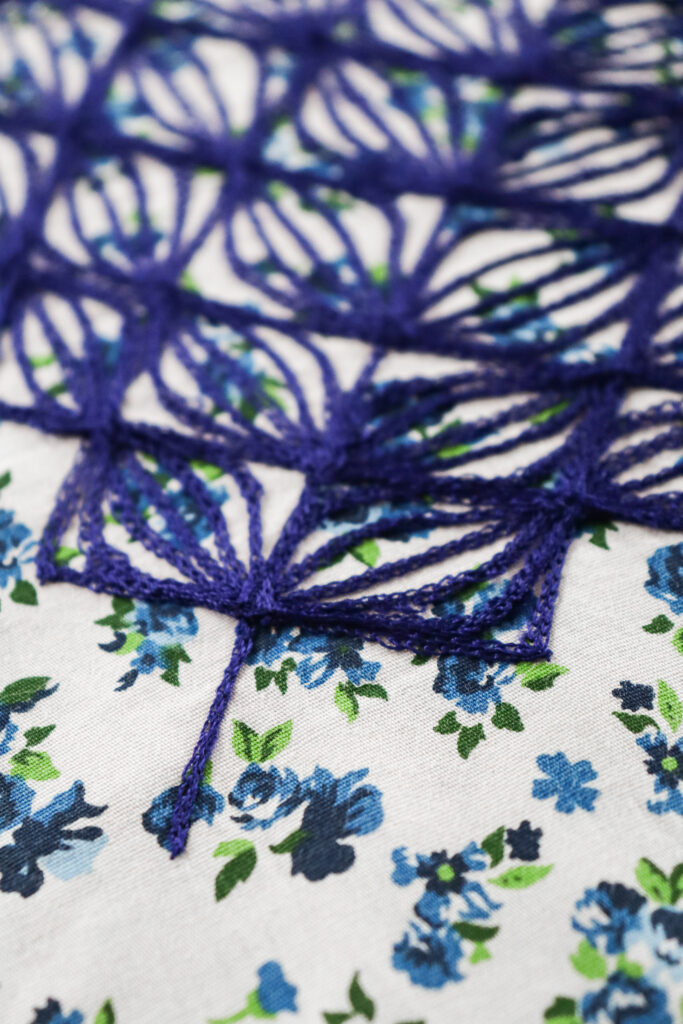
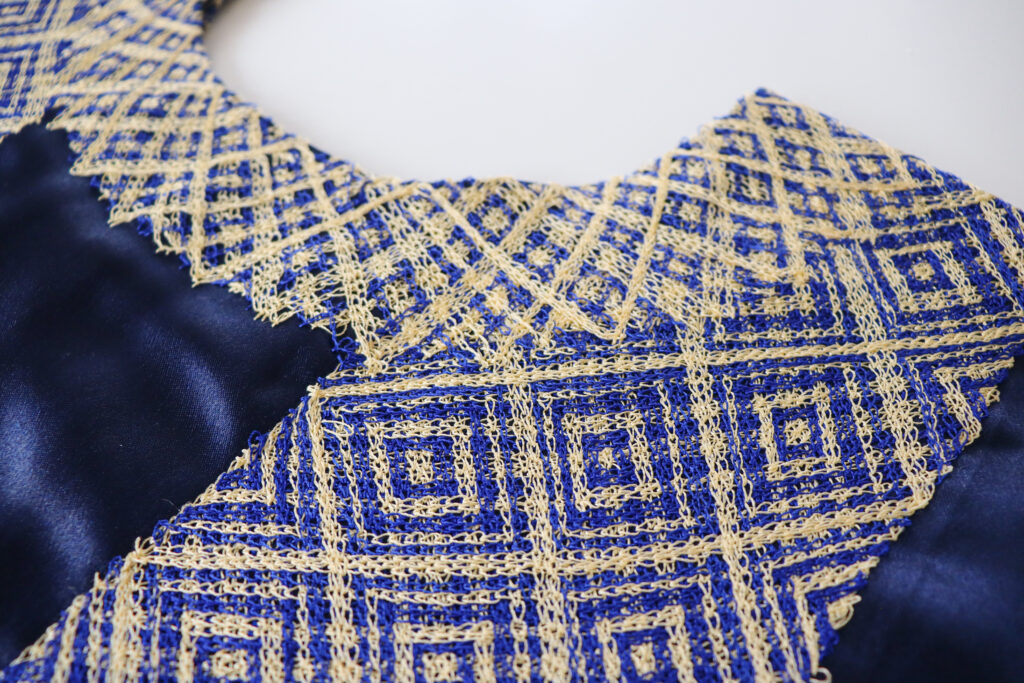
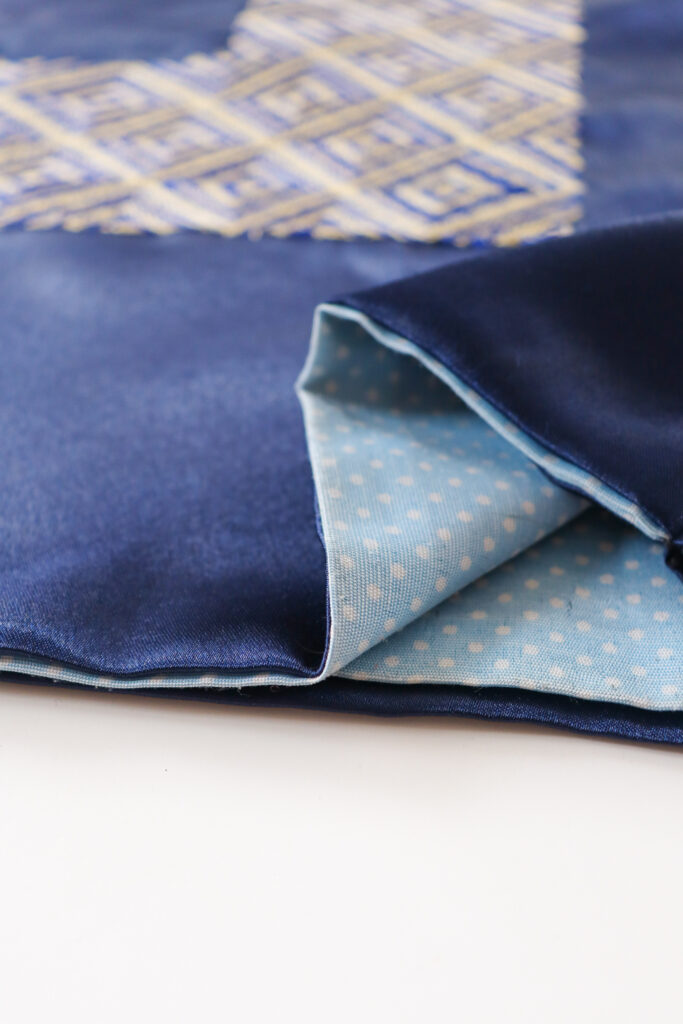

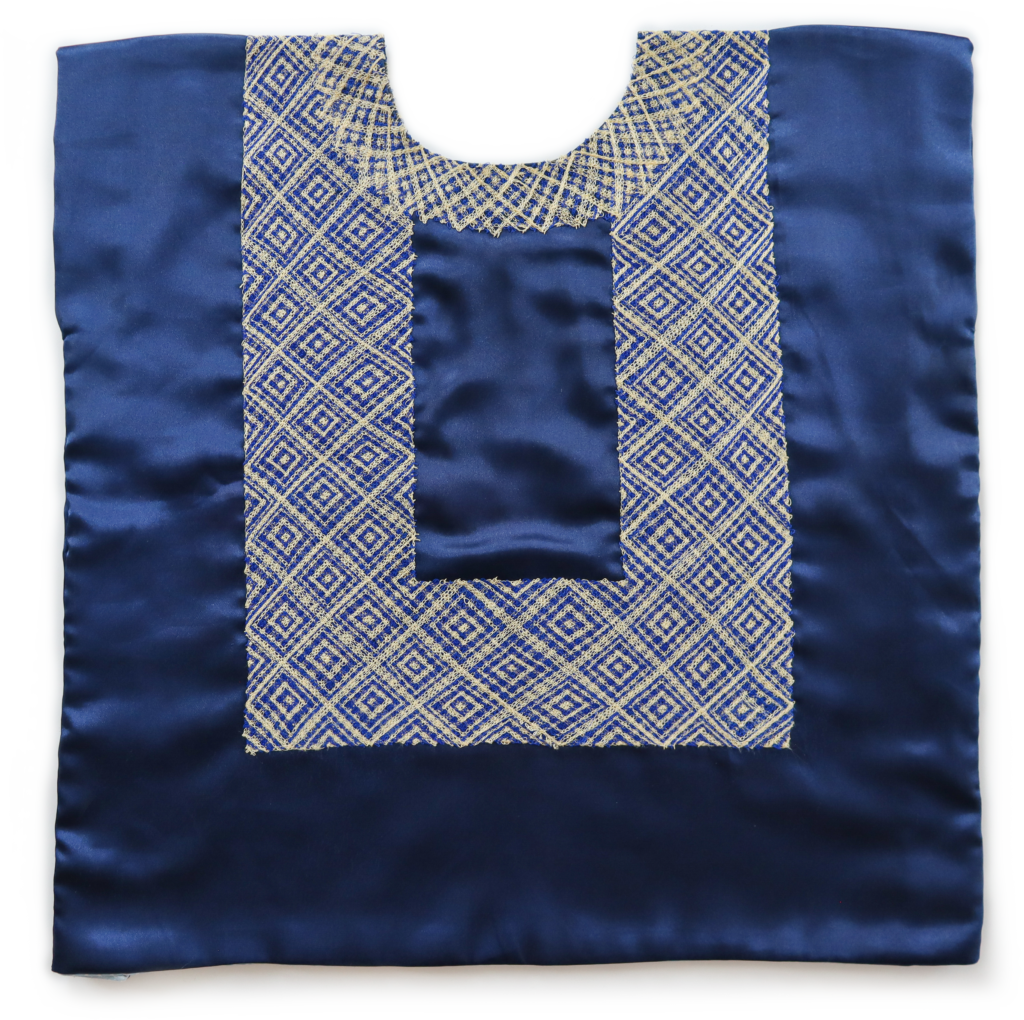



SATIN “ANGEL SKIN” OUTER CLOTH AND COTTON LINING
COTTON, SILK, OR POLYESTER THREAD IN LAYERS OF CHAIN STITCH that CREATE TEXTURE
COTTON HUIPIL DECORATED WITH “Cadenilla” Stitch
Pulling out three neatly folded paper bags, Zaira asks if I want to see the different fabric options. I let the huipil choose me and run my palms over the parcels until I decide on the middle bag. Inside I find a pre-cut black and white polka-dotted huipil pattern with an intricate orange chain stitch border. I immediately wonder if I should have opened the other packages as well. Can I pull off these colors?
We begin by measuring the width, length, and armholes with precision. Then move on to the part I’ve been dreading—the sewing. Zaira explains how the machine works, and I nervously situate the fabric between the needle and the presser foot and press down on the pedal. But I overestimate the pressure, and the needle furiously devours the material. I’ve made a mess! But Zaira patiently untangles my huipil from the machine, and I try again. Cautiously I move the fabric along the machine’s guide, completing the first hem within a minute. I’m about to celebrate my success, but I realize I have two more sides to go. With the hem complete, we move back to the worktable to finish the huipil the traditional way—by hand.
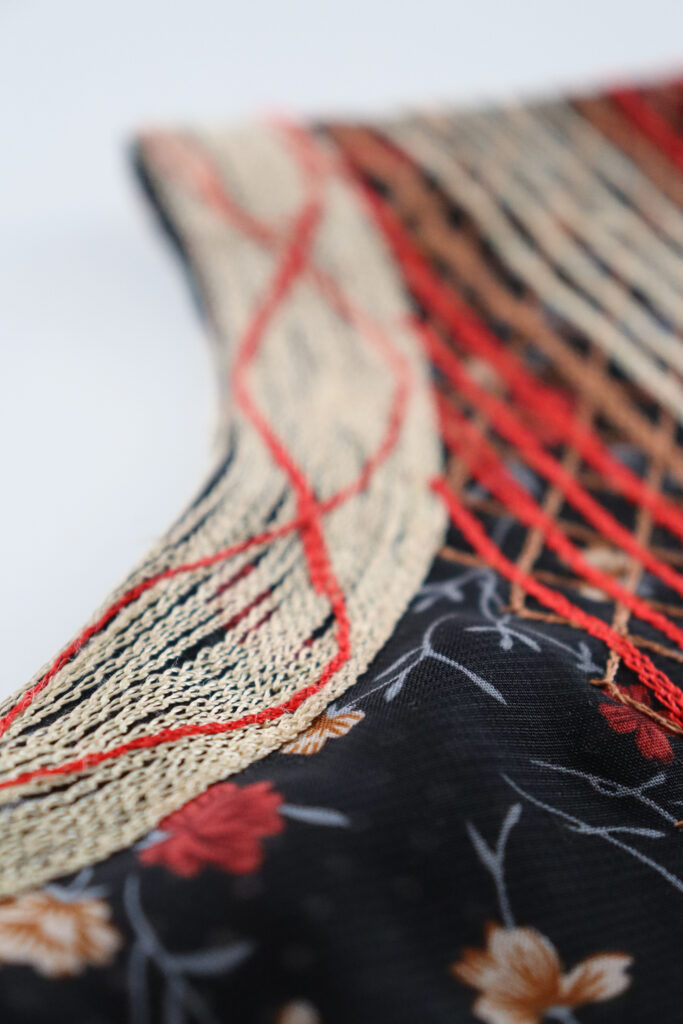


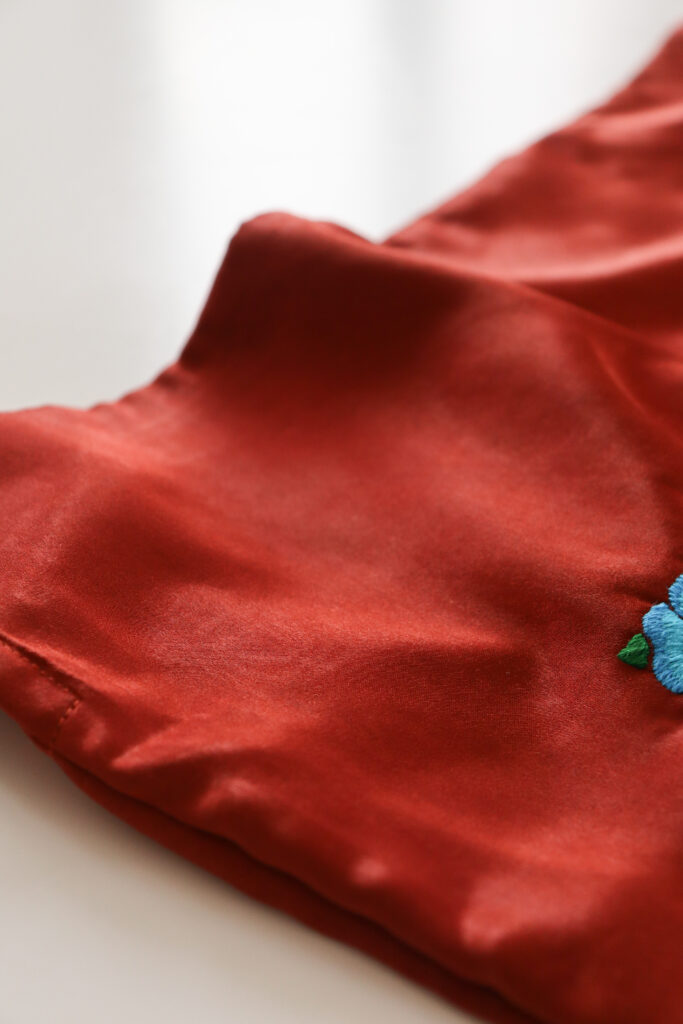

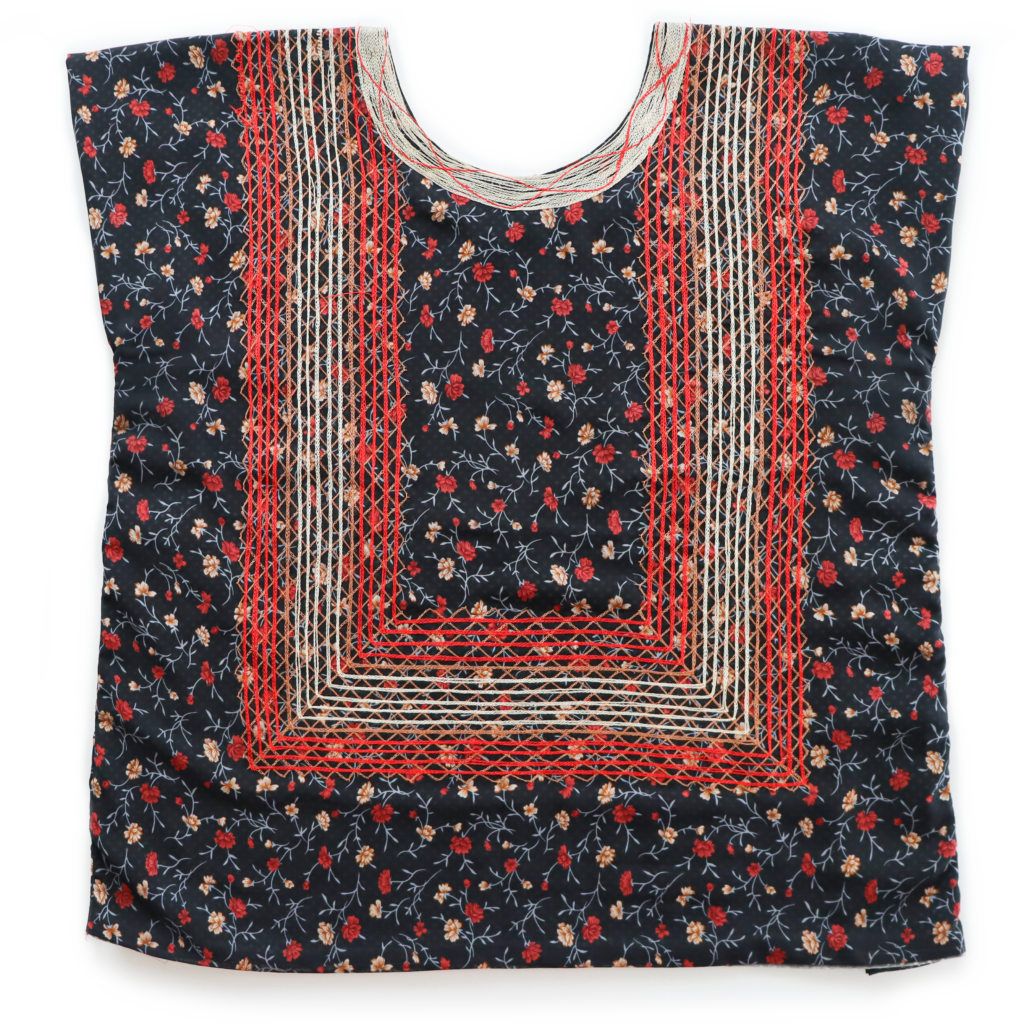



GEOMETRIC CHAIN STITCH AND FLOWERS WITH SMALL NEEDLE EMBROIDERY
round collar
OUTER CLOTH WITH FLORAL PRINT AND POLKA DOT LINING
I am genuinely humbled once I’ve completed my huipil. I may be new to sewing and proud of my minor accomplishment, but it isn’t lost on me just how complicated this process is. I’m just scratching the surface, focusing on the technical aspect, not the art. The days, weeks, and even months artisans spend weaving on looms, dying fabric with natural pigments, then hand-embroidering intricate designs, or manually completing an entire huipil with cadenilla stitch on sewing machines, takes enormous talent. And I am struck by how important it is for new generations to preserve this traditional process.
With all my fingers intact, I return to my hotel and stand in front of the full-length mirror, admiring my creation. Despite my initial doubts, I can see that the pattern is perfect, and the colors pair nicely. I know I made the right decision letting the huipil choose me.


